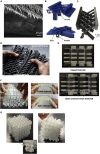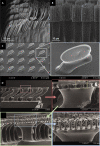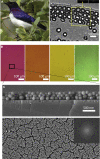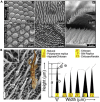Engineering with keratin: A functional material and a source of bioinspiration
- PMID: 34355149
- PMCID: PMC8319812
- DOI: 10.1016/j.isci.2021.102798
Engineering with keratin: A functional material and a source of bioinspiration
Abstract
Keratin is a highly multifunctional biopolymer serving various roles in nature due to its diverse material properties, wide spectrum of structural designs, and impressive performance. Keratin-based materials are mechanically robust, thermally insulating, lightweight, capable of undergoing reversible adhesion through van der Waals forces, and exhibit structural coloration and hydrophobic surfaces. Thus, they have become templates for bioinspired designs and have even been applied as a functional material for biomedical applications and environmentally sustainable fiber-reinforced composites. This review aims to highlight keratin's remarkable capabilities as a biological component, a source of design inspiration, and an engineering material. We conclude with future directions for the exploration of keratinous materials.
Keywords: Biomaterials; Engineering materials; Materials design.
© 2021 The Author(s).
Conflict of interest statement
The authors declare no competing interests.
Figures






















References
-
- Alibardi L. Cell organization of barb ridges in regenerating feathers of the quail: implications of the elongation of barb ridges for the evolution and diversification of feathers. Acta Zool. 2007;88:101–117. doi: 10.1111/j.1463-6395.2007.00257.x. - DOI
-
- Arzt E., Quan H., McMeeking R.M., Hensel R. Functional surface microstructures inspired by nature – from adhesion and wetting principles to sustainable new devices. Prog. Mater. Sci. 2021;119:100778. doi: 10.1016/j.pmatsci.2021.100778. - DOI

